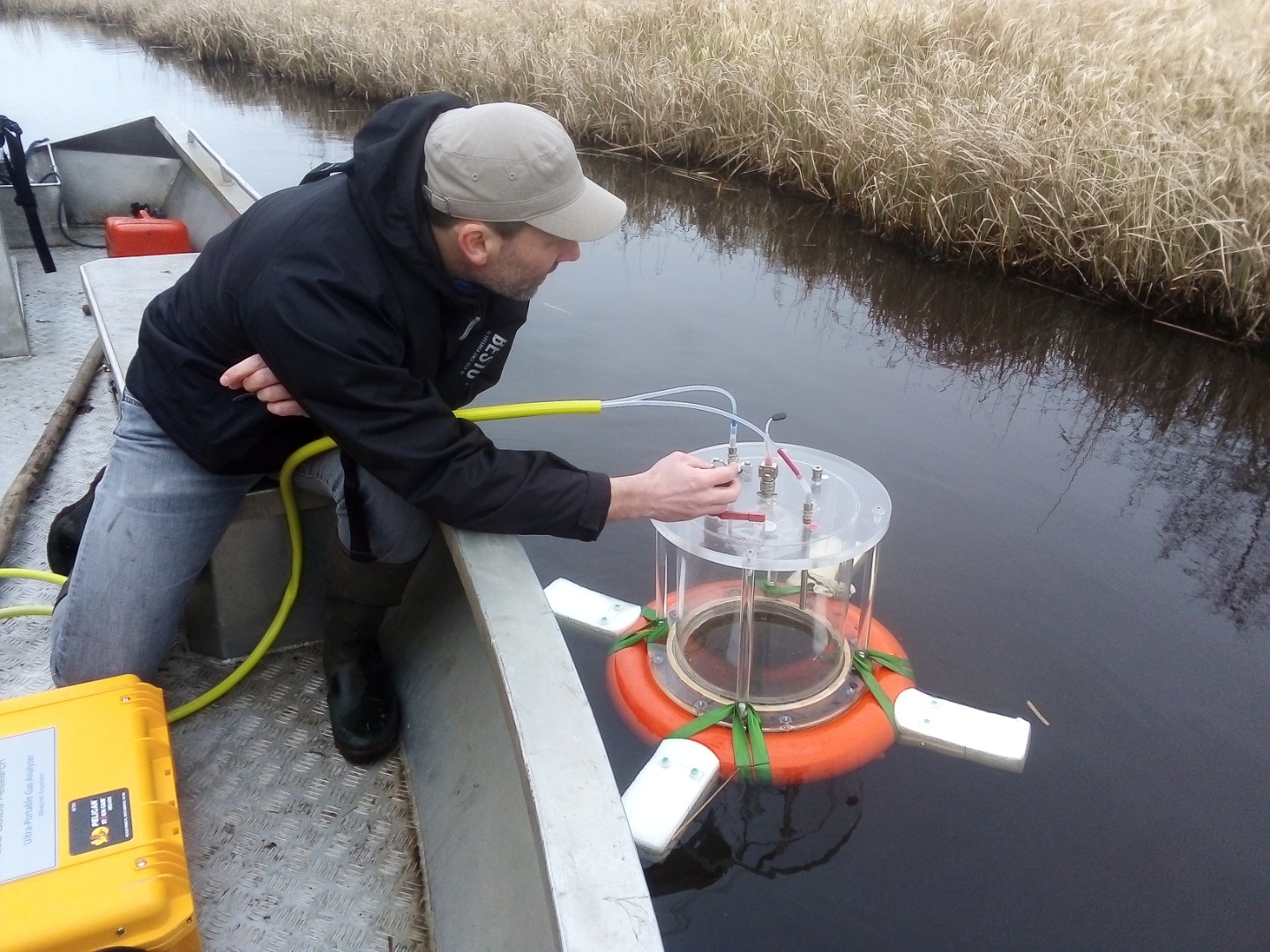In Care-Peat, the carbon fluxes in peatlands are measured with techniques adapted to each pilot site.
Before the lockdown imposed by the COVID-19 crisis, the French team of the project (Sebastien Gogo and Adrien Jacotot – University of Orléans and Laurent André – BRGM) led a campaign in The Netherlands and Belgium to test a new protocol of carbon measurements.
One of the innovations is the use of a floating chamber connected to a Los Gatos Research (LGR) analyzer (material lend by the colleagues from the Laboratoire de Physique et Chime de l’Environnement et de l’Espace, UO-CNRS-CNES). The floating chamber makes it possible to do the measurements of CO2 and CH4 fluxes directly in the channels and creeks of the Dutch pilot site 'De Wieden'. The first results are very encouraging since this early campaign allowed identifying the most relevant places for the future measurements.
On the Belgian pilot site, the valley of the Black Creek ('Zwarte Beek'), the peatland is water saturated. The measurements carried out there are more traditional: a collar is first inserted into the soil ensuring the connection between the soil and the measuring chamber.
> More information on the Care-Peat measurement protocol (full report)

